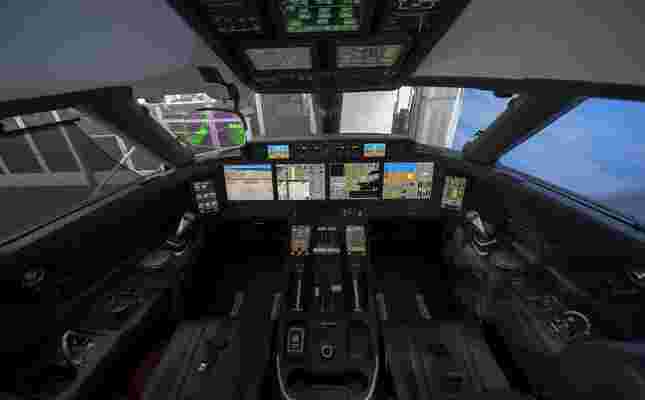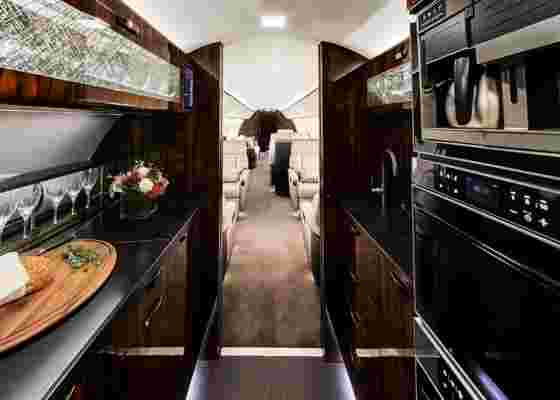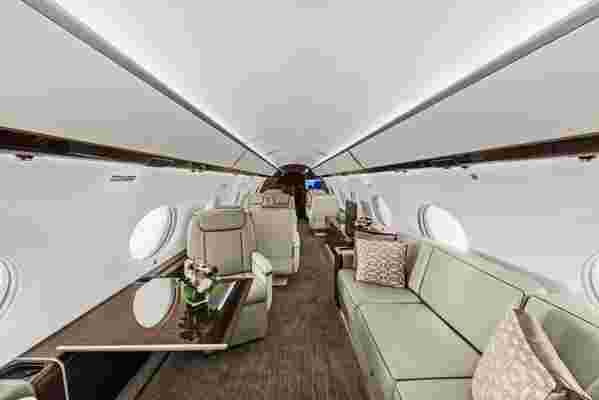Gulfstream Aerospace—which has designed and manufactured private aircraft for nearly 60 years—recently announced its plans for two new jets to be released in 2018 and 2019. The G500 and G600, respectively, are pushing the limits in private aviation, both in aerodynamics and interiors. Similar to previous models, the G600 can fly, nonstop, from New York to Beijing. Distance traveled, however, is no longer the gold standard for private jets. As Tray Crow, Gulfstream’s director of interior design, explains, “We can only push the bar on travel distances so far before you’re simply circumnavigating the globe. As a result, the focus has shifted from distance flown to more opulent interiors.” The interiors team, headed by Crow, works much like a traditional design firm—with a few crucial differences, of course. Their dimensions are not a home or an office, but a combination of the two (as clients often work and sleep on the aircraft), built in the form of a metal tube that flies at an altitude of 51,000 feet.
The design team at Gulfstream works in tandem with the customer in customizing their cabin. Clients can visit Gulfstream showrooms in London, Savannah (GA), Long Beach (CA), and Dallas (TX), to select china, carpeting, leather, and veneers; the company's engineers worked with a supplier to devised a lightweight stone tiling for the aircraft, perfect for spill-prone areas like the kitchen. The design team also works with each client to figure out such specifications as bathroom size (with or without a bidet) and whether the kitchen is at the front or rear of the plane (meals and drinks being prepared in the back means the crew is more visible; the cabin is also louder, an issue since most of the lounging or sleeping units are also at the rear of an airplane). Clients can preview all of their choices on an application called Design Book, that provides a 3-D rendering of the plane's interior scheme.

An image of the pilot’s cockpit aboard Gulfstream’s brand-new G600.
However, Gulfstream’s focus isn’t solely on the interiors specifications that clients can see. The company is pushing the envelope even further, implementing such features that don’t necessarily meet the eye but make the experience aboard a G600 all the richer. On regular passenger planes, for example, the ambient oxygen concentration is decreased at high altitude, meaning passengers’ heart rates go up throughout the duration of the flight; this causes, among potential medical risks, more fatigue and jet lag upon arrival (since your heart is working harder to circulate more blood). Gulfstream scientists have engineered a way to flow in fresh air every 90 seconds, making passengers significantly less lethargic following a flight. It's worth noting, too, that the G600 team at Gulfstream includes many former pilots. This means they understand the demands of flying airplanes, and have an ear tuned to the interests of their former colleagues, listening to their concerns in concert with the demands of their customers. It’s a combination that, when done extremely well, creates one of the most aesthetically beautiful and aeronautically safe private jets in the world today.

The kitchen can be located near the front of the private jet, an option not available with other business aviation companies.

Clients work closely with a team of interior designers at Gulfstream to ensure every desired detail is added to the custom-built jet.
Passengers can enjoy watching television during the flight. The new G600 can comfortably fit up to 19 passengers.
Some 1,750 scientist and engineers work at Gulfstream’s R&D center in Savannah, GA, where they devote their time to fine-tuning such specs as which type of acoustics make the plane interiors as quiet as possible.
